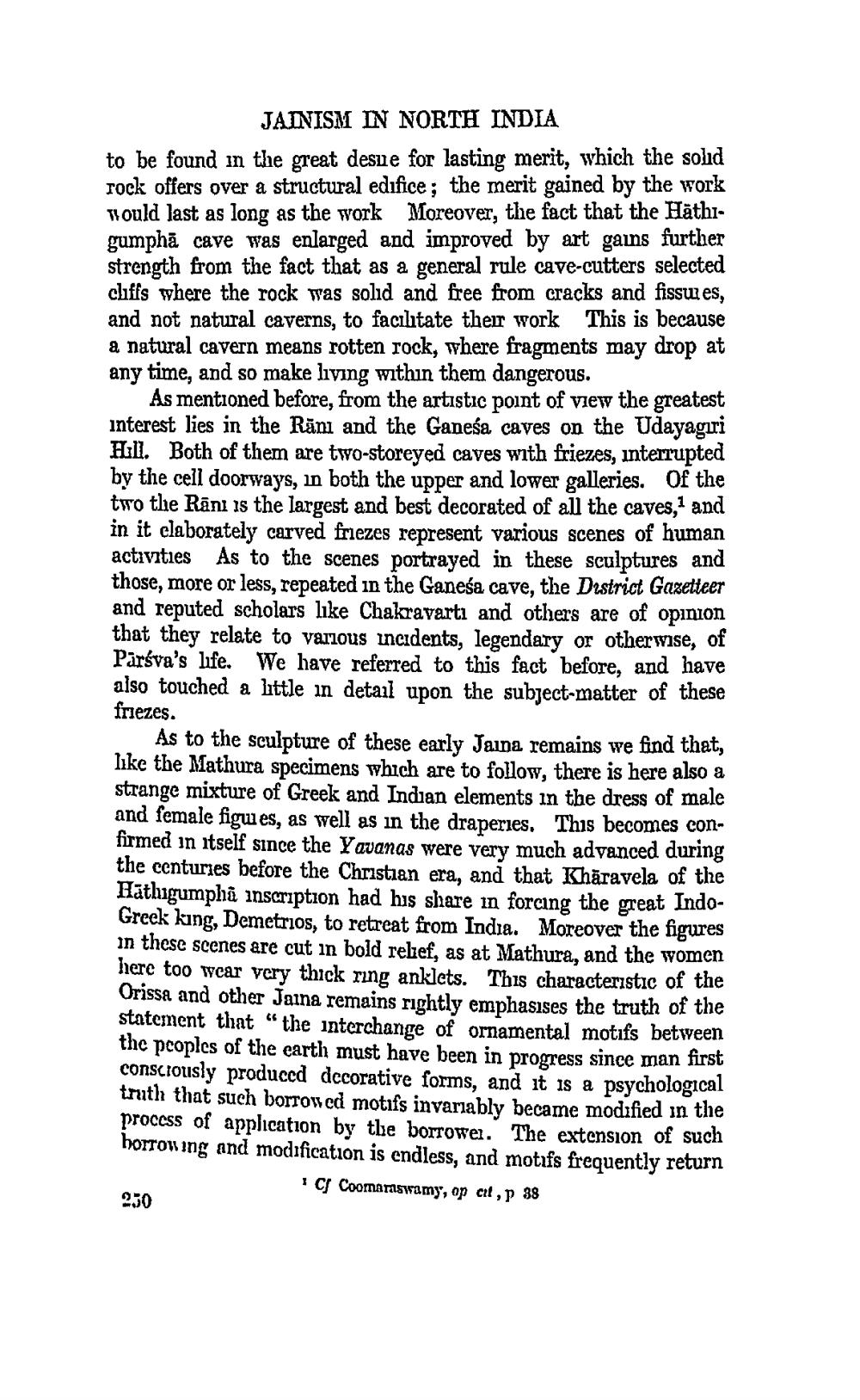________________ JAINISM IN NORTH INDIA to be found in the great desue for lasting merit, which the solid rock offers over a structural edifice; the merit gained by the work would last as long as the work Moreover, the fact that the Hathigumpha cave was enlarged and improved by art gains further strength from the fact that as a general rule cave-cutters selected cliffs where the rock was solid and free from cracks and fissues, and not natural caverns, to facilitate their work This is because a natural cavern means rotten rock, where fragments may drop at any time, and so make living within them dangerous. As mentioned before, from the artistic point of view the greatest interest lies in the Rani and the Ganesa caves on the Udayagiri H.Il. Both of them are two-storeyed caves with friezes, interrupted by the cell doorways, in both the upper and lower galleries. Of the two the Rani is the largest and best decorated of all the caves, and in it claborately carved frezes represent various scenes of human activities As to the scenes portrayed in these sculptures and those, more or less, repeated in the Ganesa cave, the District Gazetteer and reputed scholars like Chakravarti and others are of opinion that they relate to various incidents, legendary or otherwise, of Parsva's life. We have referred to this fact before, and have also touched a little in detail upon the subject matter of these friezes. As to the sculpture of these early Jaina remains we find that, like the Mathura specimens which are to follow, there is here also a strange mixture of Greek and Indian elements in the dress of male and female figues, as well as in the draperies. This becomes confirmed in itself since the Yavanas were very much advanced during the centuries before the Christian era, and that Kharavela of the Hathigumphi inscription had his share in forcing the great IndoGreek king, Demetrios, to retreat from India. Moreover the figures in these scenes are cut in bold relief, as at Mathura, and the women here too wear very thick ring anklets. This characteristic of the Orissa and other Jaina remains rightly emphasises the truth of the statement that "the interchange of ornamental motifs between the peoples of the earth must have been in progress since man first Consciously produced decorative forms, and it is a psychological truth that such borrowed motifs invariably became modified in the process of application by the borrower. The extension of such HOTTowing and modification is endless, and motifs frequently return ic Coomaraswamy, op cit, p 38 230




